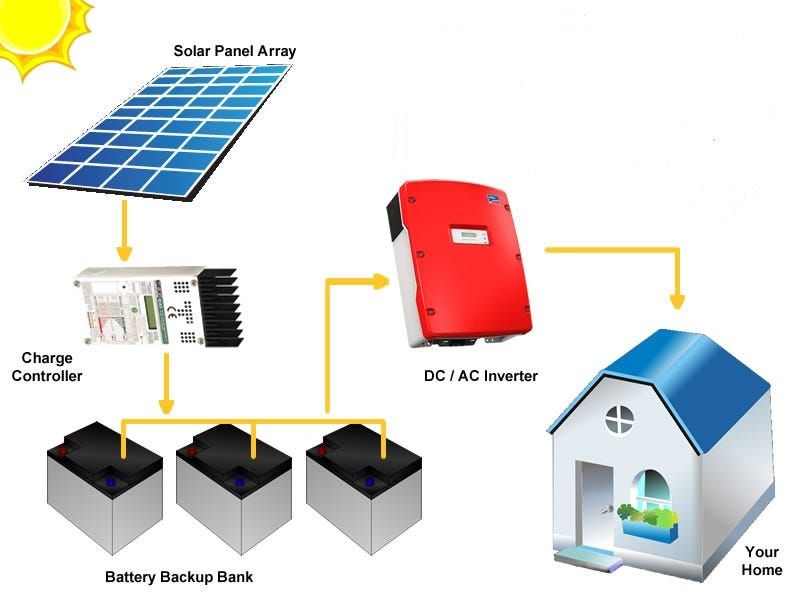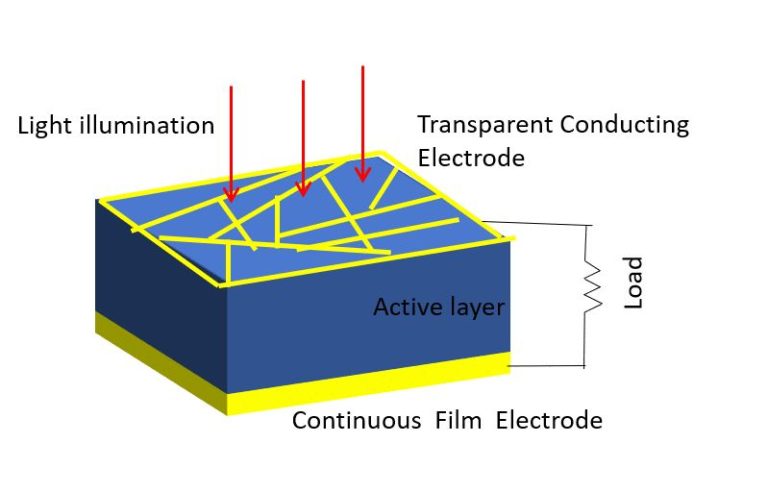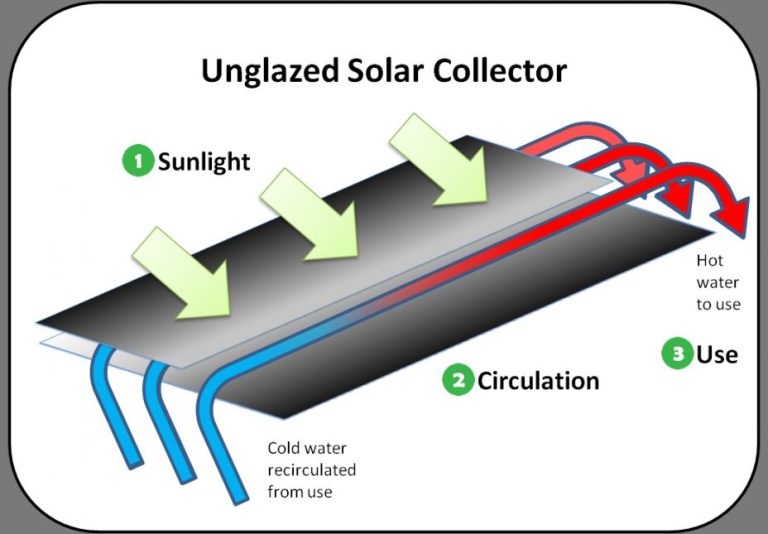How Is Active Solar Energy Processed To Make Energy?
Active solar energy refers to technologies that convert energy from the sun into usable forms of energy. This is done through solar cells, which absorb photons from sunlight and convert them into electricity.
Active solar energy is important as a renewable energy source because it offers a clean, sustainable way to generate electricity. Solar power produces no air or water pollution, and solar panels can be installed on homes and businesses fairly easily to reduce reliance on fossil fuels. The amount of sunlight that hits the Earth’s surface in one hour is enough to power human activities for an entire year. Solar energy is also extremely abundant – enough sunlight strikes the Earth in 90 minutes to power the entire world for a year. As solar technology continues to improve in efficiency and decline in cost, solar power has the potential to become a major contributor to the world’s electricity supply.
How Solar Cells Work
Solar cells, also called photovoltaic cells, convert sunlight directly into electricity. This process takes advantage of the photovoltaic effect, which describes how certain materials are able to convert light (photons) into electricity (voltage).
Solar cells are made of semiconductor materials like silicon. When sunlight shines on the solar cell, photons from the sunlight are absorbed by the semiconductor material. This excitation of the photons causes the release of electrons in the material, generating electricity. The electrons can then be captured and turned into an electric current that powers devices.
Typically, solar cells are wired together to form solar panels or modules. The more light that hits a solar cell, the more electricity it generates. Solar panels can be used alone to power small devices and homes, or many panels can be connected to form large utility-scale solar power plants.
Types of Solar Cells
There are three main types of solar cells used in active solar energy systems:
Monocrystalline Silicon Cells
Monocrystalline silicon cells are made from pure crystalline silicon and have the highest efficiency rates, generally around 15-20%. The cells have a distinct black color and uniform look. Monocrystalline panels are more expensive than other types but tend to be the most space-efficient.
Polycrystalline Silicon Cells
Polycrystalline silicon cells are made from fragments of silicon melted together. They have a speckled blue color and lower efficiency than monocrystalline at around 13-16%. Polycrystalline panels tend to be cheaper but require more space for the same wattage output as monocrystalline.
Thin-Film Cells
Thin-film solar cells use microscopic layers of photosensitive materials like copper indium gallium selenide. They have the lowest efficiency at around 7-13% but are lightweight and flexible. Thin-film can be installed where conventional panels don’t fit. Durability and toxicity are concerns for some thin-film materials.
Solar Cell Design
Solar cells are the foundational building blocks of solar energy systems. Individual solar cells only produce a small amount of electricity, so they need to be wired together in modules (also called solar panels) to produce usable amounts of power. Solar modules consist of solar cells that have been electrically connected and encapsulated in an environmentally protective laminate. Solar modules come in standard sizes, with typical residential solar panels having 60 to 72 solar cells wired together. The cells are carefully arranged within the panel to optimize electricity production.
The solar cells within a module are wired together in series strings, with the positive electrode of one cell connected to the negative electrode of the next cell. The more solar cells connected in a string, the higher the voltage the module can produce. 60-cell residential panels typically have two 30-cell strings wired in parallel. Larger commercial panels may have more parallel strings and up to 144 cells total. Bypass diodes are also wired across each series string to prevent reverse currents and overheating if a cell is shaded. On the back of the panel, a junction box contains the electrical connections and terminals for the entire module.
The way the solar cells are arranged and connected directly impacts how much power a solar panel can produce. Solar panel manufacturers design modules to optimize power output, durability, size and other factors. Engineers use computer modeling and lab testing to determine the optimal solar cell layout, wiring, and encapsulation materials for different applications and power needs.
Tracking Systems
Solar panels can be mounted on tracking systems to follow the sun’s path across the sky and optimize energy capture throughout the day. There are two main types of solar tracking systems:
Single-Axis Tracking
Single-axis trackers have one axis of rotation that allows the solar panels to tilt east to west over the course of a day. The axis of rotation is typically aligned along a north-south orientation. Single-axis trackers produce around 25% more energy than fixed tilt systems.
Dual-Axis Tracking
Dual-axis trackers have two axes of rotation – one horizontal and one vertical. This allows the solar panels to directly face the sun as it moves across the sky throughout the day. Dual-axis trackers can increase energy production by around 30% compared to fixed tilt systems. However, the increased mechanical complexity makes them more costly and prone to maintenance issues.
Overall, tracking systems can significantly boost solar energy production. However, the added costs need to be weighed against the extra energy yields. They are more common for large-scale solar installations than residential systems.
Inverters

An inverter plays a crucial role in a photovoltaic system by converting the direct current (DC) electricity produced by solar panels into alternating current (AC) electricity. This allows the solar power system to connect to the electrical grid or power home appliances designed for AC current.
The conversion process inside an inverter works by using a series of transistors to switch the DC current on and off at a certain frequency. This produces a waveform that alternates between positive and negative charge, creating an AC current. The output frequency is controlled to match the standard AC frequency of 60 Hz in the US grid.
Inverters also regulate the voltage and optimize the performance of the solar array. More advanced inverters can provide protective features such as anti-islanding to prevent back-feed into the utility grid when there is a power outage. Overall, the inverter serves as the brains of the PV system, ensuring the solar electricity is optimized, conditioned, and synchronized to work with the electrical grid or AC-powered equipment.
Batteries
To provide power when sunlight is limited or unavailable, many solar energy systems utilize batteries to store excess electricity generated during sunny periods. Lead-acid batteries are commonly used for residential solar arrays due to their low cost and wide availability. However, lithium-ion batteries are gaining popularity for their higher energy density, lighter weight, decreased maintenance requirements, and longer lifespan compared to lead-acid. Flow batteries are another emerging storage technology that uses liquid electrolytes to store energy in large-scale tanks instead of solid electrode plates.
Battery banks are sized to meet the energy demands during low or no sunlight conditions. Determining the appropriate battery capacity requires analyzing the solar array size, average energy usage, weather patterns for the location, and the desired number of days the system should provide power without sunlight. Oversizing the battery bank increases costs, while undersizing limits backup capabilities. Battery management systems help optimize performance and prevent over-charging or deep discharging that shortens battery life.
Pairing solar arrays with battery storage provides households and businesses with uninterrupted power supply and grid independence. Stored solar energy can eliminate electric bills, provide emergency backup power, or allow transitioning to fully off-grid systems. However, batteries do increase system costs and require maintenance and eventual replacement. Overall, incorporating energy storage significantly expands the capabilities of solar energy systems.
Grid Integration
For solar energy systems to work with the utility grid, they must be connected and synchronized with the grid. This allows solar panels to send excess electricity into the grid when not needed onsite. It also allows the site to pull electricity from the grid when solar production is insufficient. This integration is accomplished through inverters that are designed to match phase with grid power.
The connection and flow of electricity is managed through a net metering agreement with the utility company. When the solar system produces more power than the site is using, the excess is sent to the grid and the meter runs backwards, applying a credit. At night or during periods of low solar production, the site will pull power from the grid and the meter runs forward, applying charges. At the end of the billing cycle, the credits are subtracted from the charges to calculate a net energy cost or credit.
For grid stability and safety, solar inverters must disconnect from the grid during power outages. They only reconnect once the grid stabilizes. This prevents solar systems from energizing power lines while utility workers are trying to restore grid operation.
To integrate large-scale solar farms to the grid, utilities must conduct generator interconnection studies to assess the impacts on grid infrastructure. Upgrades may be needed to support power flows from centralized solar installations before they can interconnect.
Solar Array Installation
Installing a solar array requires careful planning, layout, wiring, and mounting of the solar panels. Here are the key steps involved in installing a solar panel system:
Site Survey – The installation begins with a site survey to determine the optimal placement and tilt angle of the panels to maximize sun exposure. The area needs sufficient space and minimize shade from buildings, trees etc. South-facing rooftops or open ground are ideal locations.
Structural Assessment – For rooftop systems, the roof structure must be assessed to ensure it can handle the additional weight load of the panels. Rooftop mounts, rails and racking are designed to securely attach the panels.
Permitting – Based on the system size, location and local regulations, appropriate permits need to be obtained from the local municipality before starting installation.
Panel Mounting – Panels are mounted and secured on the racks, frames or directly to the roof, angled to face maximum sunlight. Proper spacing is maintained between the panels for airflow and maintenance access.
Wiring – Copper wiring connects the DC output of the panels into strings, which aggregate into an AC current via inverters. Conduit, disconnects and overcurrent devices are wired per electrical code.
Inspection – Local authorities inspect the completed installation for code compliance, safety and proper functioning before system start-up and grid connection.
With meticulous planning and experienced installers, a solar array can be designed and mounted successfully to generate clean electricity for decades to come.
Conclusion
To summarize, solar energy is an emerging renewable energy source that converts sunlight into electricity using photovoltaic solar cells. This active conversion process relies on the photovoltaic effect to absorb photons and release electrons. There are different types of solar cells, with varying costs, efficiencies, and applications. Key components like inverters and tracking systems help maximize energy capture from the sun. Continued declines in solar technology costs, along with supportive government policies, are enabling wider deployment of solar arrays on homes, businesses, and utility-scale projects. The future is bright for solar energy as a sustainable, renewable alternative to fossil fuels that can help mitigate climate change. With ongoing innovations in materials, system design and grid integration, solar has the potential to become a mainstream energy source and play a leading role in the global clean energy transition.





